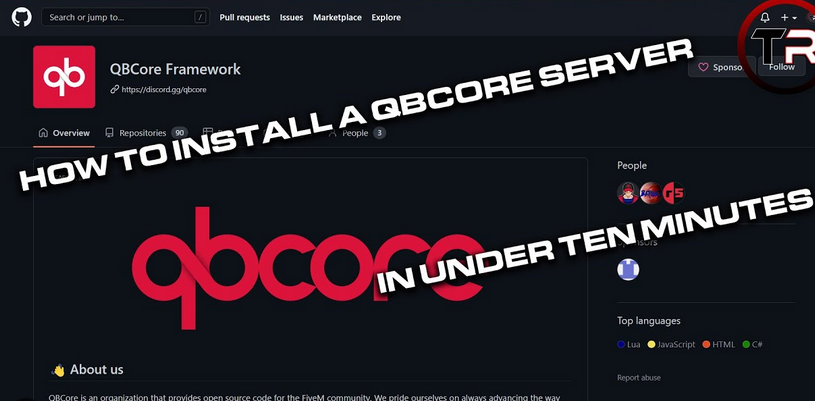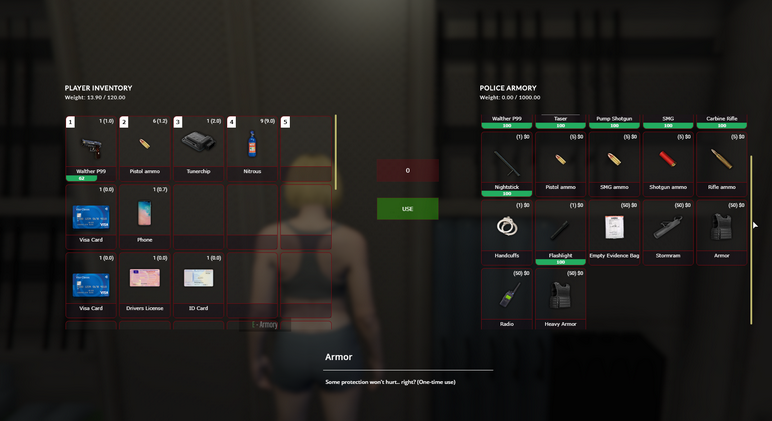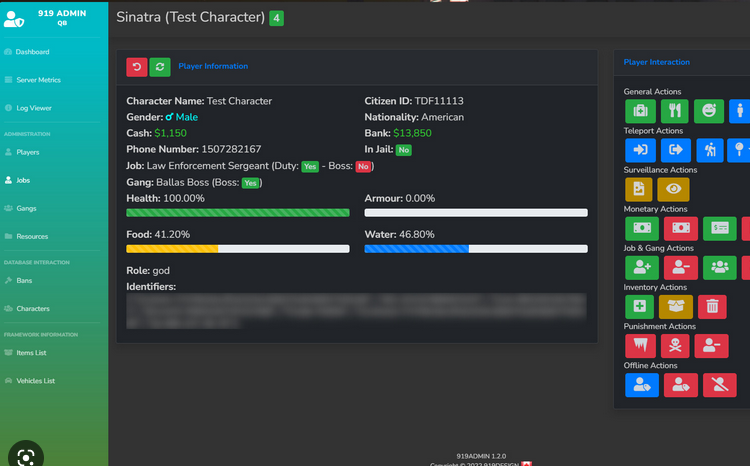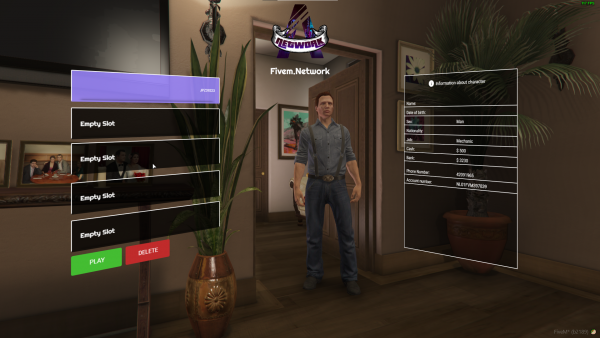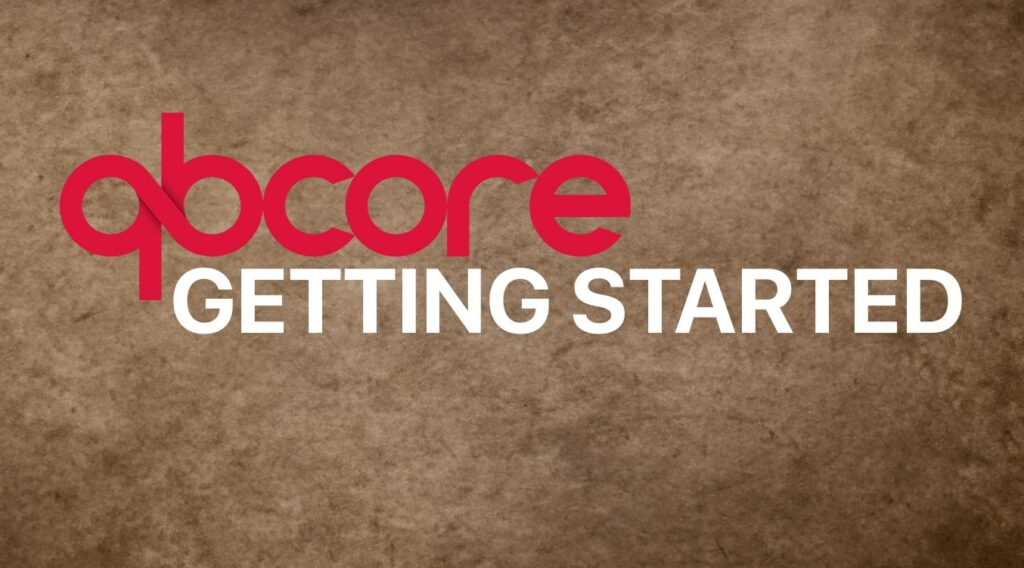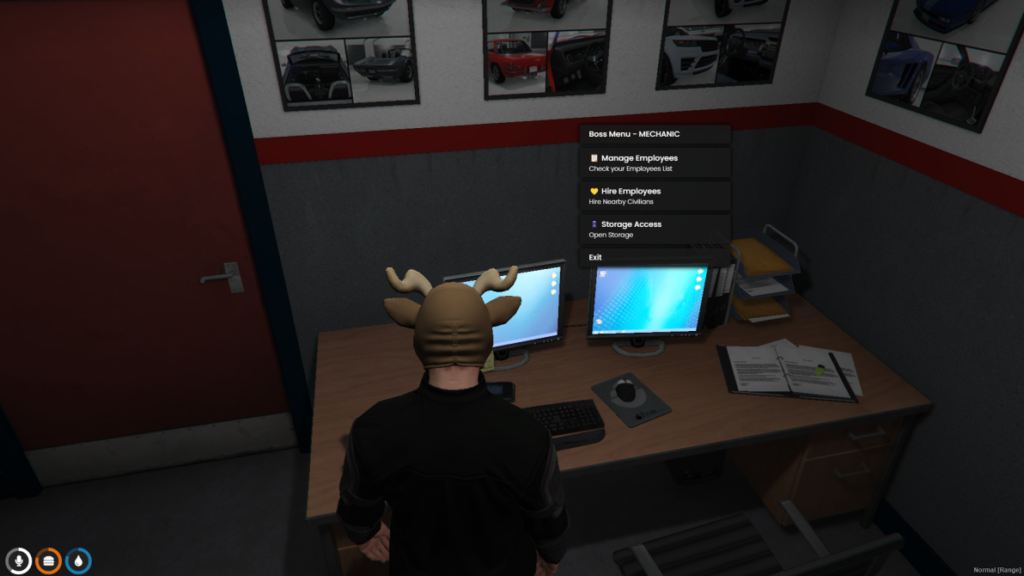La synchronisation de la base de données est un aspect essentiel de la gestion d'un serveur FiveM à l'aide de Cadre QBCore. Lorsque des problèmes de synchronisation surviennent, ils peuvent perturber le jeu, provoquer des incohérences dans les données et frustrer les joueurs et les administrateurs. Ce guide vous guidera à travers les problèmes de synchronisation de base de données les plus courants dans QBCore, fournira des solutions étape par étape et proposera des mesures préventives pour garantir le bon fonctionnement du serveur.
Table des matières
1. Comprendre la synchronisation des bases de données dans QBCore
La synchronisation de la base de données garantit que les données du joueur, telles que les informations sur les personnages, l'inventaire et la progression, sont cohérentes entre le serveur et le client. Dans QBCore, ce processus est géré via MySQL ou des bases de données similaires, qui stockent et récupèrent les données de manière dynamique pendant le jeu. Les problèmes de synchronisation surviennent souvent en raison de mauvaises configurations, de ressources obsolètes ou d'erreurs de connexion à la base de données.
2. Problèmes courants de synchronisation de base de données
2.1 Les données des caractères ne se chargent pas
L'un des problèmes les plus fréquents est celui des données de personnage qui ne se chargent pas correctement. Cela peut se produire en raison de données corrompues, de tables de base de données mal configurées ou d'erreurs de connexion. Par exemple, les joueurs peuvent rencontrer des erreurs telles que « Nous vérifions votre allocation » ou « Une erreur de base de données s'est produite lors de la connexion au serveur ».
2.2 Écarts entre les articles et les stocks
Les joueurs peuvent remarquer que des objets disparaissent ou ne se synchronisent pas correctement entre le serveur et leur inventaire. Cela est souvent dû à des structures de table incompatibles ou à des erreurs dans les scripts de gestion de l'inventaire.
2.3 Incompatibilité des données côté serveur et côté client
Dans certains cas, les données sur le serveur ne correspondent pas à celles affichées côté client. Cela peut entraîner des incohérences, telles qu'une progression de mission incorrecte ou un nombre d'objets erroné. Par exemple, les attributs de genre ou les données du véhicule peuvent ne pas se synchroniser correctement en raison de valeurs par défaut manquantes dans le schéma de base de données.
3. Solutions étape par étape
3.1 Vérification des connexions à la base de données
- Étape 1 : Vérifiez que vos paramètres de connexion à la base de données (hôte, port, nom d'utilisateur, mot de passe) sont corrects dans le
config.luafichier. - Étape 2 : Assurez-vous que le serveur de base de données est opérationnel et accessible. Utilisez des outils tels que
pingou vérifiez l'état du serveur dans votre panneau d'hébergement. - Étape 3 : Testez la connexion à l'aide du bouton « Tester la connexion » de votre outil de gestion de base de données. Si les erreurs persistent, vérifiez les caractères réservés dans les mots de passe ou les restrictions du pare-feu.
3.2 Mise à jour de QBCore et des dépendances
- Étape 1 : Assurez-vous que vous utilisez la dernière version de QBCoreLes mises à jour incluent souvent des corrections de bogues et des améliorations pour les problèmes de synchronisation.
- Étape 2 : Mettre à jour toutes les dépendances, telles que
oxmysqlouqb-inventaire, à leurs dernières versions. - Étape 3 : Redémarrez votre serveur après avoir appliqué les mises à jour pour vous assurer que les modifications prennent effet.
3.3 Examen des journaux du serveur
- Étape 1 : Accédez aux journaux de votre serveur pour identifier les erreurs liées à la synchronisation de la base de données. Recherchez des messages tels que « Échec de la connexion à la base de données » ou « Erreur de synchronisation avec les données du joueur ».
- Étape 2 : Corrigez les erreurs détectées. Par exemple, si les journaux indiquent des tables SQL manquantes, assurez-vous que les tables requises sont créées et renseignées.
3.4 Mise en œuvre des contrôles d'intégrité des données
- Étape 1 : Ajoutez des contrôles d’intégrité des données dans vos scripts pour valider les données avant qu’elles ne soient envoyées à la base de données.
- Étape 2 : Utilisez des transactions pour les opérations de base de données afin de garantir la cohérence. Par exemple, encapsulez les requêtes INSERT ou UPDATE dans des transactions pour éviter les mises à jour partielles.
- Étape 3 : Auditez régulièrement votre schéma de base de données pour vous assurer qu'il correspond aux exigences de QBCore.
3.5 Utilisation des scripts et des outils communautaires
- Étape 1 : Découvrez des outils développés par la communauté comme CAD de Sonora, qui offre des fonctionnalités avancées de synchronisation de base de données pour QBCore. Il vous permet de mapper les données des personnages, des licences et des véhicules de manière transparente.
- Étape 2 : Installez et configurez ces outils avec soin, en suivant la documentation fournie. Par exemple, Sonoran CAD nécessite un mappage de table et de colonne approprié pour les données de caractères et de véhicules.
4. Mesures préventives
4.1 Sauvegardes régulières
- Planifiez des sauvegardes régulières de votre base de données pour éviter toute perte de données. Utilisez des outils tels que
mysqldumpou le service de sauvegarde de votre hébergeur. - Testez régulièrement vos sauvegardes pour vous assurer qu’elles peuvent être restaurées avec succès.
4.2 Surveillance des performances du serveur
- Utilisez des outils de surveillance pour suivre les mesures de performances de la base de données, telles que le temps de réponse et l'utilisation du processeur.
- Identifiez et corrigez les goulots d’étranglement qui pourraient entraîner des problèmes de synchronisation.
4.3 Assistance et mises à jour de la communauté
- Restez en contact avec la communauté QBCore via les forums, Discord et GitHub. Signalez les problèmes et demandez de l'aide si nécessaire.
- Suivez les mises à jour et les correctifs officiels pour éviter les problèmes de synchronisation potentiels.
5. Conclusion
Les problèmes de synchronisation de base de données dans QBCore peuvent être difficiles, mais avec la bonne approche, ils peuvent être gérés et résolus efficacement. En suivant les étapes décrites dans ce guide, vous pouvez garantir une expérience plus fluide pour vous et vos joueurs. N'oubliez pas que la prévention est essentielle : des sauvegardes, des mises à jour et une surveillance régulières sont essentielles pour maintenir un serveur stable.
Pour en savoir plus, consultez ces ressources :
- Documentation CAO de Sonora pour des fonctionnalités de synchronisation avancées.
- Problèmes QBCore sur GitHub pour des solutions axées sur la communauté.
- Documentation OxMySQL pour les meilleures pratiques de connexion à la base de données.
